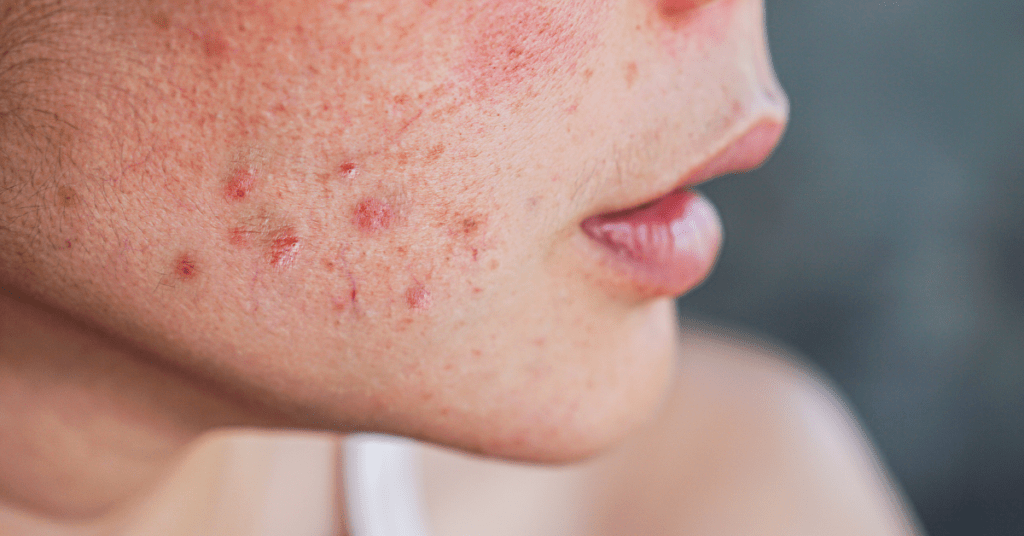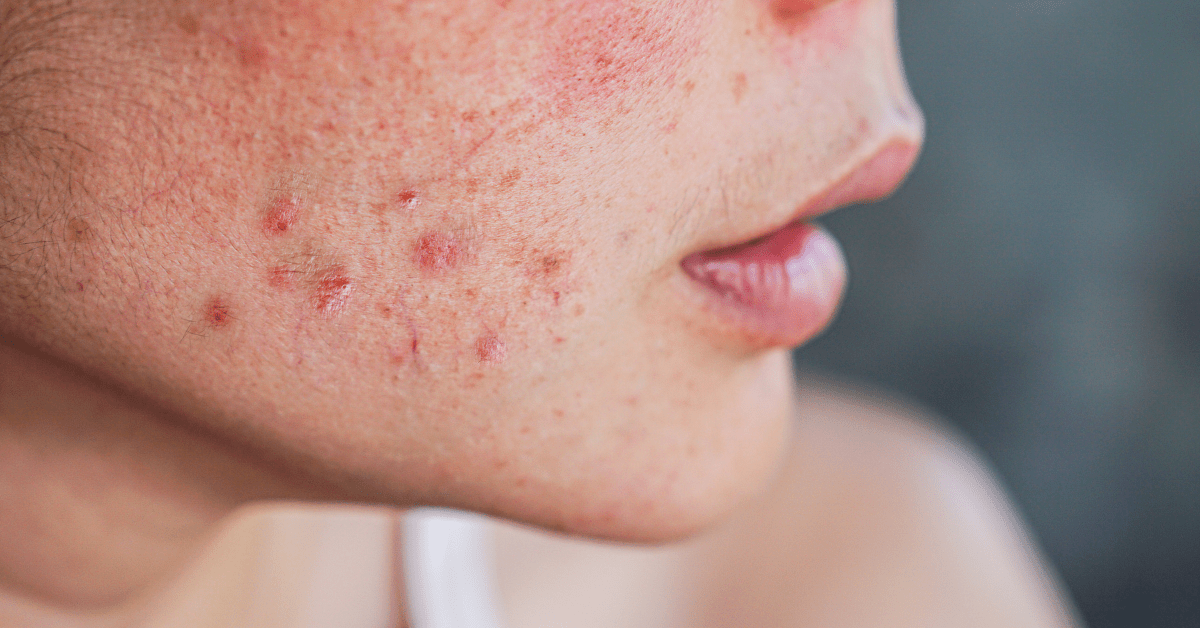Demystifying Acne: Causes, Types, and Triggers
Acne is a skin condition that affects millions of people around the world, particularly on the face. While it is most commonly associated with teenagers, acne can affect individuals of any age and significantly impact their self-esteem and quality of life. In this article, we will explore the causes of acne on the face, as well as potential treatment options.
What causes acne on the face?
The emergence of acne is attributed to hair follicles clogged with oil and dead skin cells. This leads to the formation of pimples, blackheads, and whiteheads. The face is particularly prone to acne due to the high concentration of oil glands in this area, as well as the fact that the skin is constantly exposed to environmental pollutants and other irritants.

One of the primary causes of acne is the overproduction of sebum, a natural oil produced by the skin’s sebaceous glands. When too much sebum is produced, it can clog the pores and create an environment for bacteria to grow, leading to the formation of pimples.
Hormonal changes can also trigger acne on the face. This is why acne is most common during puberty when the body undergoes significant hormonal changes. Women may also experience acne during their menstrual cycle, pregnancy, or menopause due to fluctuations in hormone levels.
Environmental factors such as stress, diet, and certain medications can also contribute to acne on the face. Stress can cause the body to produce more sebum, while a diet high in sugar and processed foods can also trigger acne. Some medications, such as steroids and lithium, can also cause acne as a side effect.
Symptoms of Acne on the Face
Acne on the face can present itself in several ways, including:
- Blackheads: Small black or yellowish bumps on the skin’s surface. They are caused by the accumulation of sebum and dead skin cells in the hair follicles.
- Whiteheads: Similar to blackheads, whiteheads are small bumps caused by the accumulation of sebum and dead skin cells. However, they are covered by a thin layer of skin, giving them a white or flesh-colored appearance.
- Papules: Small, red, and raised bumps tender. They are caused by inflammation in the hair follicles.
- Pustules: Similar to papules, pustules are red and raised bumps filled with pus. They are also tender to the touch and can be painful.
- Cysts: Large, painful, inflamed bumps filled with pus. They are the most severe form of acne and can leave scars on the skin.
What are the factors that contribute to acne on the face?
Several factors can contribute to the development of acne on the face. These include:
- Hormonal Changes: Hormonal changes that occur during puberty, pregnancy, and menstruation can all trigger the production of excess oil in the skin, leading to the development of acne.
- Genetics: Some people may be more predisposed to developing acne due to their genetic makeup.
- Stress: Stress can cause the body to produce more hormones, which can lead to the development of acne.
- Diet: A diet high in sugar and processed foods can contribute to acne on the face.
- Skincare Products: Certain skin care products can clog pores and contribute to the development of acne. It’s important to choose products that are labeled “non-comedogenic,” meaning they won’t clog pores.
How to Treat Acne on the Face
There are several treatment options available for individuals with acne on the face. These include:
- Topical Treatments: Topical treatments, such as benzoyl peroxide and salicylic acid, can effectively reduce the appearance of acne on the face. These treatments work by reducing inflammation and unclogging pores.
- Oral Medications: In some cases, oral medications, such as antibiotics or hormonal therapy, may be prescribed to treat acne on the face.
- Chemical Peels: Chemical peels involve the application of a solution to the face, which causes the skin to peel off. This can help to reduce the appearance of acne scars and improve the overall texture of the skin.
- Laser Therapy: Laser therapy involves using a laser to target and destroy the bacteria that cause acne. This treatment can be particularly effective for individuals with severe facial acne.
- Lifestyle Changes: Changing your diet, managing stress levels, and adopting a regular skincare routine can all help reduce acne on the face.
It is advisable to consult a healthcare provider as the Food and Drug Administration (FDA) warns against over-the-counter acne lotions, cleansers, and other products. These products can cause serious problems such as irritation, itching, and redness.
How to prevent acne on the face
Preventing acne on the face can be challenging, but there are several steps you can take to reduce your risk of developing this condition. These include:
- Cleanse Your Face Regularly: Cleansing your face twice a day can help remove excess oil and dirt from the skin, contributing to the development of acne.
- Avoid Touching Your Face: Touching your face can transfer bacteria and other irritants to the skin, increasing your risk of developing acne.
- Choose the Right Skincare Products: Choose skincare products labeled “non-comedogenic” to avoid clogging pores.
- Management of Stress: Stress results in the production of hormones that contribute to the development of acne. Stress management by doing exercise or meditation can help to reduce your risk of developing acne on the face.
- Eat Healthy Food: Healthy diet that includes fruits, vegetables, and whole grains can help to reduce inflammation in the body and also reduces the occurrence of acne.
Mayo Clinic recommends seeking emergency medical advice if you have difficulty breathing, swelling of the eyes, face, lips, or tongue, or experiencing tightness of the throat.
Sources:
Mayo Clinic. Acne. (https://www.mayoclinic.org/diseases-conditions/acne/symptoms-causes/syc-20368047). Accessed on April 29, 2023
Mayo Clinic. Acne. (https://www.mayoclinic.org/diseases-conditions/acne/diagnosis-treatment/drc-20368048). Accessed on May 1, 2023
National Institute of Arthritis and Musculoskeletal and Skin Diseases. Acne. (https://www.niams.nih.gov/health-topics/acne). Accessed on May 2, 2023
Category
- Health Issues (69)
- Healthy Diet (46)
- Herbs for Health (11)
- Mental Health (32)
- Skin Care (20)

